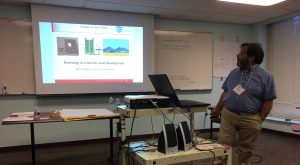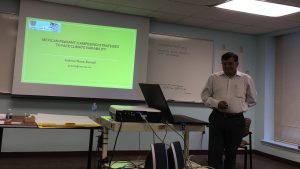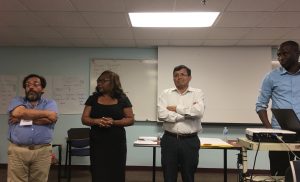Blog Blog Day 1 – June 25, 2018 Blog Day 2 – June 26, 2018 Blog Day 3 – June 27, 2018 Blog Day 4 – June 28, 2018 Blog Day 5 – June 29, 2018 Blog Day 6 – June 30, 2018 Blog Day 7 – July 1, 2018 Blog Day 8 – July 2, Read More ...

ICRPS 2018 Summer Institute | Tuskegee, AL | June 24-July 07
"Social Justice, Rural and Natural Resource Policy"
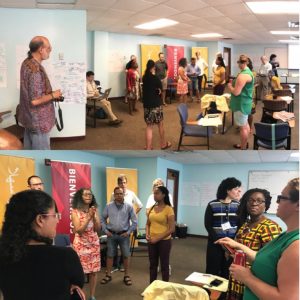 Today was the last day for lectures and we finished with a bang. The morning lectures included topics of migration and the causes of migration as well as how it relates to remittances. We broke into pairs and discussed our personal migrations along with the reasoning of the moves. Universally family, education, and opportunity guided our reasons for migration. We ended the morning session learning about Alabama ASPIRE. This organization focuses their time, energy and resources to influence legislators votes on policies that would improve the quality of life for rural Alabama families. These policies range from increasing income tax requirements to eliminating taxes on food.
Today was the last day for lectures and we finished with a bang. The morning lectures included topics of migration and the causes of migration as well as how it relates to remittances. We broke into pairs and discussed our personal migrations along with the reasoning of the moves. Universally family, education, and opportunity guided our reasons for migration. We ended the morning session learning about Alabama ASPIRE. This organization focuses their time, energy and resources to influence legislators votes on policies that would improve the quality of life for rural Alabama families. These policies range from increasing income tax requirements to eliminating taxes on food.
After Lunch, our day continued with a session on feeding the world, a social justices approach. We were introduced to social Justice perspective in the food supply chain and we discussed the Oligopolistic links and how it creates unbalanced negotiation power among actors. We learned that to counterbalance the concentration of power, there is need for the creation of farm producers’ organization and niche markets. This will the farm producers to negotiate directly with consumer and thus increase negotiation power. In addition, we discussed how heterosis effect can be used to improve production. To help reduces challenges, food supply chain needs to be managed by government and at the same time the food supply should be enshrined into a territory so as to foster security at the local level.
Next, we discussed Biotechnology to feed the world!!!! We considered the shift of Paradigm from antiquity to agriculture revolution. The next big thing now is Genome editing as well as Big data and precision Agriculture which utilize technology advancement which constitute a quicker way to make changes.
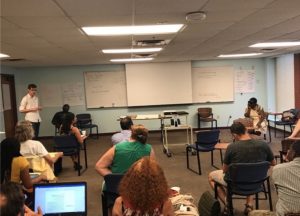 The last lecture of the day focused on organic production and small-scale farming. We learned that there is an obvious gap between conventional and organic farming. Generally, more research opportunities and incentives are available to conventional farmers. Another important point is the higher labor needed for organic farming versus conventional farming which explains why organic food products are more expensive. However, we were reminded that it is a choice to either choose between organic or non-organic food products, so, if you want to change what you put inside change what you are eat.
The last lecture of the day focused on organic production and small-scale farming. We learned that there is an obvious gap between conventional and organic farming. Generally, more research opportunities and incentives are available to conventional farmers. Another important point is the higher labor needed for organic farming versus conventional farming which explains why organic food products are more expensive. However, we were reminded that it is a choice to either choose between organic or non-organic food products, so, if you want to change what you put inside change what you are eat.
After, we broke out into groups to discuss our final Presentation. The break-out session lasted for about 3 hours. It was great to see student gather together to prepare for their final presentations. Safe to say that we are ready to address to disparity issues.
Written by: Palash Ranjan Sanyal & Stephen Penner
 Starter
Starter
It’s a perfect 4th of July, 85 F outside and the group is ready to hit the road. We will head out in few minutes as everyone gathers for breakfast. This is a group craving for good coffee, every morning. Today’s choice is Coffee from burger king and burger king only.
Good to have coffee
People had their coffee, and now making connection continues. Stephen sitting next to me is in a deep discussion on poverty and investment. Ryan and Kara, Micheal and Shireen, Lidia and Philomina, the micro conversations continues.
Out of Bus
We reached the Callaway Resort in 2 hours and right away went for activities. Some went swimming, some played basketball and some went for a hike.
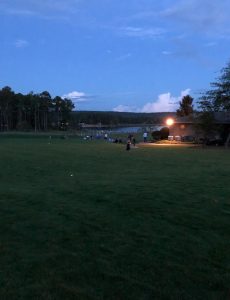
4th from the perspective of visitors
Oh say can you see,
We got a glimpse of the great American melting pot! All colours, shapes, and socio-economic classes.
What so proudly we hail’d,
America communing together to celebrate American independence
We witnessed – The rockets red glare and the bombs bursting in air (fireworks), the gallant streams (in all the activities) and saw that no other country waves the flag like America.

Written by: Dinesh Dhakal & Merlin Hernandez
We started Day 9 by reviewing what we learned in our last visit of Dekalb County Farmers Market and The Jimmy Carter Presidential Library and Museum. Everybody shared how those two sites are connected to social justice and rural policy. The products available in the farmers market are diverse, fresh and even live. We all believed that farmers are getting market access and fair prices for their products. It was insightful to discover that Jimmy Carter is nurtured by an African American community. This undoubtedly influenced Carter’s approach to social justice and rural policy programs that sought to benefit the poorest sectors of the society. The Carter commitment to human rights and his accomplishments in international peace are some of the exemplary aspects of his presidency.
The sessions were dedicated to policies and programs for indigenous and minority farmers, land owners and communities. Tuskegee Graduate, Miles Robinson who spearheads the USDA Outreach and Assistance for Socially Disadvantaged Farmers and Ranchers, brought a clear grassroots focus to the session in outlining farmer engagement in the process of rural development as an important challenge for African American farmers in the Black Belt South. There is a long history of mistrust of government bureaucracies. Farmers often select themselves out of available programs because they do not believe that they would qualify, do not know about programs or how to access them. Miles’s role is one of outreach and advocacy, and he sits with farmers and their families in the process of building a trust relationship. This allows Miles and his team to provide assistance with farm ownership, loan applications, financial management, technical assistance, and the purchase of operating equipment. There has been some success in creating long-term relationships with retail chains like Walmart.
Philomena De Lima of the University of the Highlands in Scotland sought some clarity on the implications of the link between rural small producers, who are happy to have a ready market for all they can produce, and large food chains who may offer lower prices, and demand costly production improvements and increased capacity. This lowers farmers’ margins and they are forced to reduce costs by lowering wages. Perhaps the most far-reaching casualty of such relationships is that of small farmers outside of the system who cannot price-compete. Philomena saw the issue as one of social justice.
Sara Epp of the Universityof Guelph, Canada used teleconferencing to interact with the delegates to explore The Migration of Mennonite Farmers in Canada from Southern Ontario to the North. There are similarities in the experiences of Southern Black Belt farmers and the Mennonites in terms of high costs of operations and the need for diversified revenue streams. Labor costs are lower for the Canadian groups because of the social and family structures of Mennonite communities. Divergent marketing opportunities, however, see the Mennonite group capturing the markets in the remote communities of Northern Ontario while the farmers of the Black Belt face varying levels of competition.
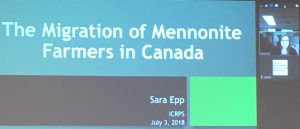
Another Tuskegee graduate, Amadu Diop, Outreach Liaison, USDA Forest Service examined Forestry and Underserved, Socially-Disadvantaged Minority Landowners as well as African American Land-Retention across 13 southern states. For African American landowners, forestry is one of the most important assets that can provide diverse sources of income. There are however, many reasons why forestry fails to provide significant incomes to this community. Those reasons are under-participation in forest management training, decline in African American farm ownership, heir property issues and documentation for inherited lands. Amadu is involved in education, building social networks, legal assistance, and building capacity through linkages with technical and financial assistance.
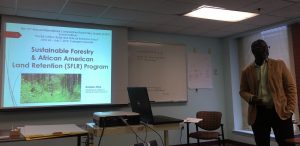
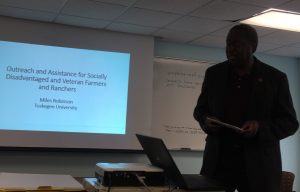
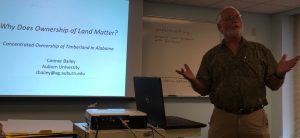

After lunch, participants learned about Natural resources and the environment focusing on minority populations. Conner Bailey, of Auburn University, presented on issues timberland ownership inequality in Alabama State, and how unequal distribution of timberland affects the livelihood of minority population. It is fascinating to know that property tax is lowest in Alabama State among the 50 states of the USA. It would be logical to raise the property tax revenue that can be spent on minority population through the education and health sectors. Souleyman Fall from Tuskegee University highlighted the use of the GIS tool, and how it works as a powerful instrument to create new data in order to do Environmental Justice (EJ) analyses focusing on minority populations. Joseph Quansah, Tuskegee University, discussed the real climate changes in Alabama State and its effects on minority populations. Joseph further outlined potential climate change adaptation strategies in order to mitigate impact on vulnerable communities. Finally, Raymon Shange, Tuskegee University discussed small land owners and rural community outreach program of the Tuskegee University that focuses on food, agriculture and the environment.
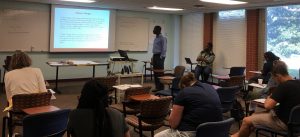
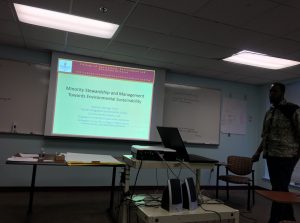
Finally ICRPS finished the afternoon session entitled Climate Change and Environmental Justice with Marco Pagani, University of Bologna who began his presentation with how bioenergy could be used as a means for rural development. Gabino Nava-Bernal, Universidad del Estado de Mexico, explored climate change strategies to deal with climate variability based on field reality and farmers perceptions. Climate change adaptive new cultivars, understanding climate change through time, crop calendar, and crop diversification are some of the important strategies to combat the effects of climate change. The afternoon session ended with the contribution of Catherine Flowers who works as Rural Development Manager for the Equal Justice Initiative. Catherine mentions the problem of inequality in rural social justice in the US. Furthermore, rural development and environmental justice is exacerbated by climate change. Catherine uses the example of Lowndes county and living conditions which are not normally seen in the developed countries. There is the presence of tropical parasites, with deficiencies in health care which are profound social justice issues.
